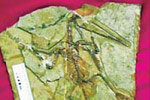Business
A trade surplus brought on by outdated perspectives
Updated: 2011-01-18 11:59
By He Weiwen (China Daily)
BEIJING - The growth of China's foreign trade in 2010 was far better than what was expected at the beginning of the year. China customs said total imports and exports increased by 34.7 percent from the previous year, reaching $2.97 trillion. Exports were $1.57 trillion, up 31.3 percent and imports $1.4 trillion, up 38.7 percent.
It is 10 percent higher than the previous peak, in pre-crisis 2008. Trade surplus in 2010 totaled $183.1 billion, $12.9 billion less than the previous year.
Sino-US trade also grew, with a trade volume of $385.3 billion, up 29.2 percent over the previous year. China's exports to the United States totaled $283.3 billion, up 28.3 percent, while US exports to China hit $102.04 billion, up 31.7 percent, surpassing $100 billion for the first time. China's surplus was $181.27 billion, $37.9 billion more than the previous year.
This is slower than China's global trade and its trade with the European Union (up 31.8 percent), Japan (up 30.2 percent), ASEAN countries (up 37.5 percent) and other major emerging markets. Growth in US exports to China is higher than its imports from China, but it is not good enough to stop the growing deficit.
Contrary to the drop in global trade surplus, China's surplus with the US reported a sharp rise.
This will remain a problem this year, but it won't hinder the prospect of a fast-growing Sino-US trade. China's exports to the US are estimated to grow by 15 percent this year, to $325 billion, and US exports to China $133 billion, up 30 percent. China's surplus will continue to rise, surpassing $190 billion. However, if the growth of US exports to China can reach and remain above 40 percent, the US deficit will cease or drop. But this is hard to achieve.
If we still apply outdated perspectives to the imbalance in Sino-US trade, it is likely we will be trapped in this predicament for a long time, missing many opportunities for growth.
We should take a new perspective. In China's global trade, trade surplus mainly comes from multinational companies trading internally, namely in the assembly sector.
Assembly trade brought a $322.9 billion global trade surplus to China in 2010, while other manufacturing and general trade yielded a $47.25 billion trade deficit. If there is no assembly trade, China will have a $139.8 billion trade deficit. This also applies to Sino-US trade.
Look at it this way: An Apple iPod model assembled by Foxconn in Shenzhen, South China's Guangdong province, sells for $299 in the US, in which Apple and its design and the marketing partners get $163, components and parts cost $132 and China gets only $4.
But every iPod exported shows China's surplus increasing by $150, which includes profits for the components and parts, and design fees for Apple. So it is not a true reflection of China's real trade surplus.
In fact, American companies benefit a great deal from it. Robert Koopman, chief economist of the United States International Trade Commission, said that of China's exports to US in 2006, only 45 percent of the total amount was made in China.
Based on this model, US trade deficit to China in 2010 is less than $100 billion.
China and the US should work together and achieve a breakthrough over the predicament brought by trade balance imbalance. China is on its way to an economic restructuring from 2011 to 2015, and both sides should promote US exports to China.
If US exports to China continue to maintain a 25-30 percent growth for five successive years, its exports to China will reach $310 billion to $370 billion by 2015, double that of 2009, and it will be above US President Barack Obama's goal of doubling exports in five years.
Therefore, China and the US should promote their economic ties not only at the top, but also by their nongovernmental economic organizations.
While strengthening dialogues and negotiations, both sides should promote trade and investment among provinces, companies and individuals.
The prospects are bright in 2011.
The author is council member of China Society for American Economy Studies.
China Daily
Specials

President Hu visits the US
President Hu Jintao is on a state visit to the US from Jan 18 to 21.

Ancient life
The discovery of the fossile of a female pterosaur nicknamed as Mrs T and her un-laid egg are shedding new light on ancient mysteries.

Economic Figures
China's GDP growth jumped 10.3 percent year-on-year in 2010, boosted by a faster-than-expected 9.8 percent expansion in the fourth quarter.